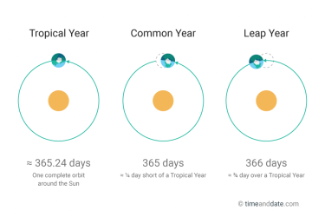This week in JBoss (3rd March 2016): Leap into Open Source
Posted by kpeeples in Weekly Editorial on Mar 5, 2016 12:50:40 PMThis year we have one extra day to enjoy Open Source Software by JBoss. This past Monday was February 29th so I thought I would share why we have one extra day on the calendar every 4 years.
One orbit of Earth around the Sun takes 365.2422 days—a little more than our Gregorian calendar’s 365. Adding an extra day, aka a leap day, to the calendar every 4 years brings the calendar in line and therefore synchronizes with the four seasons. Without leap days, the calendar would be off by 5 hours, 48 minutes, 45 seconds each year. After 100 years, the seasons would be off by 25 days. The extra leap day adjusts this drift.
A year is a leap year if it is divisible by 4, but century years are not leap years unless they are divisible by 400. So, the years 1700, 1800, and 1900 were not leap years, but the year 2000 was. Non-leap years begin and end on the same day of the week.
So to determine a leap year here is a quick algorithm:
if (year is not divisible by 4) then (it is a common year)
else if (year is not divisible by 100) then (it is a leap year)
else if (year is not divisible by 400) then (it is a common year)
else (it is a leap year)
I hope everyone had a great week. So onto our Week in JBoss...
New Releases
- The first candidate for release Infinispan 8.2 (Infinispan 8.2.0.CR1) is now available. It brings several bug fixes, documentation polishing and support for Apache Lucene 5.5.0.
- The release 0.13.0 of Hawkular Metrics is announced. This release is anchored by Hawkular integration enhancements, under-the-cover refactorings and fixes, and a new bulk data generation tool.
- RichFaces 4.5.14.Final is available for download. In this release we've implemented a long-requested feature - a menu for hiding columns in rich:extendedDataTable (you can see it action in the Showcase).
- The first Alpha release of Hibernate Search 5.6.0.Alpha2 now has experimental integration with Elasticsearch. We also updated to use Apache Lucene 5.5 - the latest stable release of our favourite search engine - as of course we’re not abandoning our traditional users!
- The Arquillian team is proud to announce the 1.0.0.Alpha9 release of the Arquillian Cube Extension component.
Fuse and Camel
Christina Lin shared part 2 of her Auto DealershipManagement Demo. This series of blog is based on building an auto dealership management system on Fuse Integration Service. It creates three major functions in the system:
- Sales report tracking
- Vehicle inventory status
- Customer IoT Service
Claus Ibsen shared the continuation of the video blogs he has done about our development on the fabric8 Camel tools. He covers the camel tools to add or edit endpoints from the current cursor position.
KIE Server
Maciej Swiderski shares the capabilities of the jBPM UI extension on the KIE server. One of the most desired use case is to be able to visualize state of given process instance - including graphical annotations about which nodes are active and which are already completed, showing complete flow of the process instance. This has been added to KIE Server as part of jBPM UI extensions and provides following capabilities:
- display process definition diagram as SVG
- display annotated process instance diagram as SVG
- greyed out are completed nodes
- marked as red are active nodes
- display structure of process forms
- display structure of task forms
He also shares what Wildfly Swarm means in the context of the KIE Server.
More from the week
- Eric Schabell shared more on the App Dev Cloud Stack Series on Why containers at scale matter
- Heiko Rupp shared Sending IoT data to Hawkular-full
- Gunnar Morling shared Converting projection results of full-text queries into POJOs
- Vlad Mihalcea shared the Hibernate Community newsletter 5/2016
Thanks for reading and being a part of a great community....
Kenneth Peeples
@ossmentor

Comments